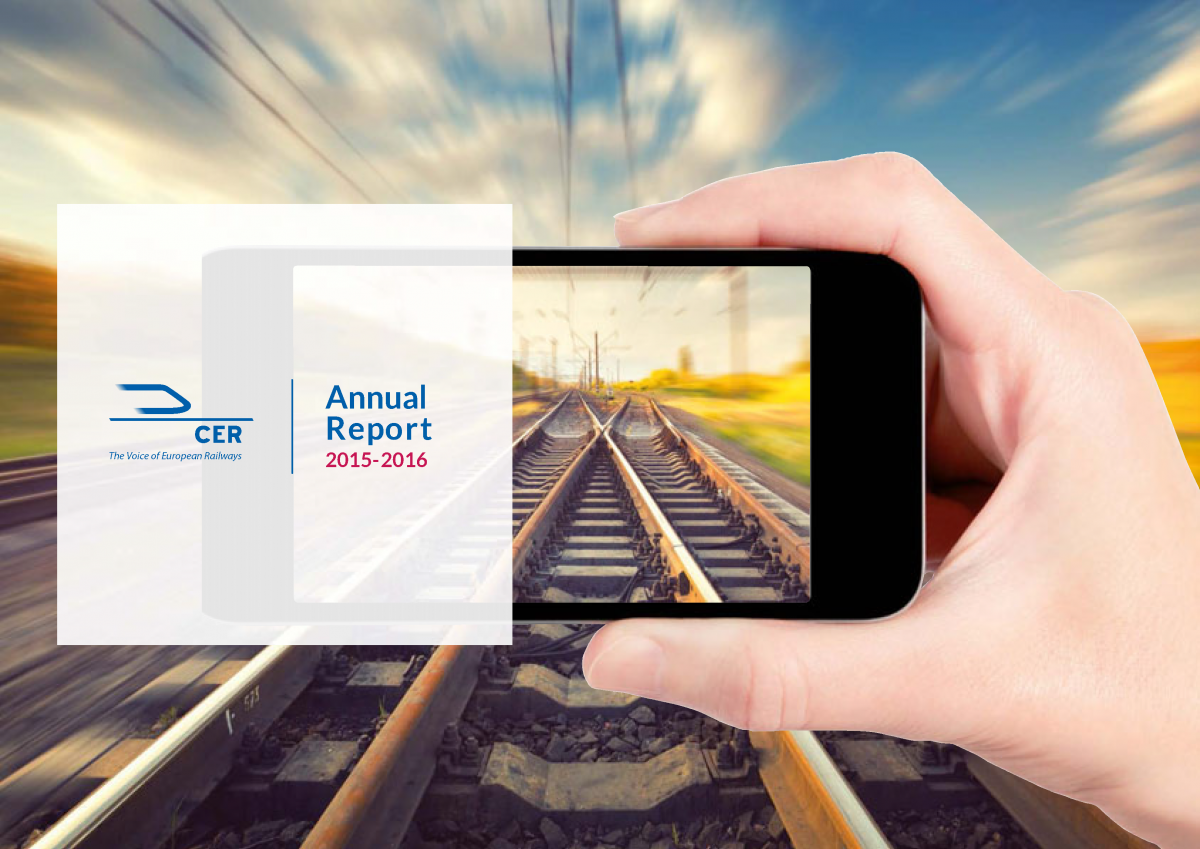Annual Report 2015-2016

Over the past 18 months, CER has kept up its determined work in carrying out its mission: to promote rail as the backbone of European mobility and as a key enabler of the European Union’s long-term strategy for decarbonising its economy.
It has been a busy time both for the policymakers and the sector.
We asked for an open, fair Single European Rail Area where all players and market forces could lead towards ever more efficient services for logistics intermediaries, long-distance passengers as well as daily commuters. The work done on both pillars of the Fourth Railway Package will certainly bring huge benefits in the near future: domestic markets will be open to competition not only on paper, and a strengthened EU Agency for Railways will boost rail interoperability while ensuring the highest level of safety.
Further work has been done on other essential aspects of transport policy, which we followed throughout the process: we contributed to the definition of the acts implementing the First Railway Package, we promoted the dialogue between social partners, we provided technical input to the EU Agency for Railways in defining the sector’s technical specifications, and we actively participated in PRIME as well as in the RU Dialogue platform – the European Commission initiatives providing a forum for infrastructure managers and railway undertakings to exchange views on current and potential future challenges.
And throughout all this work, we always kept our eyes firmly on the future.
We have identified sector business priorities and a corresponding action plan aiming at a step change in the increase of railways’ efficiency. Besides the rapid implementation of the technical pillar of the Fourth Railway Package, digitalisation has been set as one of the top priorities. As a part of the digital evolution, the Full Service Model will be the enabler of better rail ticketing services throughout Europe. In the area of freight, the Rotterdam declaration signed in June 2016 paves the way for more competitive rail freight. Last but not least we are proposing concrete ways in which the security of the rail system can be increased, while at the same time preserving its openness to last-minute customers.
But of course our efforts will not be truly fruitful unless the legislators take full responsibility for addressing the intermodal imbalances still present in the bigger picture. This is why we are looking with hope and confidence at a number of legislative dossiers that are expected to be published next year. In particular, the road transport initiatives, announced by the European Commission in 2015, will affect intermodal competition with rail.
After the negligible outcome of the 2008-2009 revision of the Eurovignette Directive, is there today a true commitment to decarbonising transport? Is there a real understanding of the cost-related distortions between road and rail transport? Is there the ambition to give rail the chance to fully deliver the benefits of its energy and environmental performance?
We certainly have this ambition, and we are ready to make sure that this ambition becomes a reality.
We hope you will enjoy reading our Annual Report, and we look forward to continuing working together to make a brighter future for the European rail sector.
